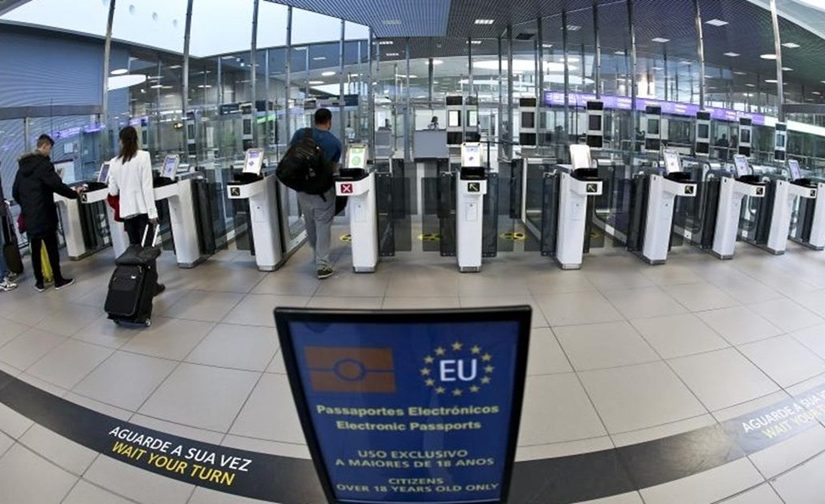NHC says 40% chance of cyclone near west coast of Africa and Cabo Verde Islands
Portugal: New border control system for Schengen countries kicks in

File photo: Lusa
The new European border control system for non-EU citizens goes online in Portugal and other Schengen countries on Sunday, replacing traditional passport stamps.
According to the Internal Security System, the new European automated external border control system, the Entry/Exit System (EES), “applies to all non-EU citizens entering the territory for short-term stays (up to 90 days in a 180-day period), regardless of whether they need a visa”.
Among the changes to border control are “the entry and exit of travellers from third countries, which will now be recorded electronically, indicating the date, time and border crossing point,” and there will no longer be a manual stamp in passports.
The system, which will operate at airports and ports, also allows for the “automatic detection of overstays in the Schengen area”, as well as interoperability with “other European databases”.
According to the Internal Security System, the information is shared in real time with the authorities of the Schengen countries, via a centralised system that is interoperable with other European security databases (such as the Schengen Information System (SIS II) and the Visa Information System (VIS).
“With the EES, Portugal and the European Union now have a digital, secure and interoperable system that makes it possible to detect false documents, irregular entries and other security threats more quickly, which puts the country at the forefront of intelligent border management, reinforcing the protection of external borders as well as cooperation and automatic data sharing between member states,” says Homeland Security.
In Portugal, the system is being implemented by the Internal Security System, in conjunction with the PSP, GNR, ANA – Aeroportos de Portugal, port administrations and the National Civil Aviation Authority.












Leave a Reply
Be the First to Comment!
You must be logged in to post a comment.
You must be logged in to post a comment.